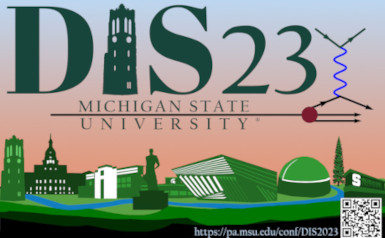Speaker
Description
Understanding the spin structure of the proton is of large interest to the nuclear physics community and it is one of the main goals of the spin physics program at the Relativistic Heavy Ion Collider (RHIC). Measurements from data taken by the PHENIX detector with transverse (p$^{\uparrow}$ + p, p$^{\uparrow}$ + Al, p$^{\uparrow}$ + Au) proton polarization play an important role in this, in particular, due to the leading order access to gluons in polarized protons. Transverse single-spin asymmetries (TSSAs) provide insight into initial and final state spin-momentum and spin-spin parton-hadron correlations. In addition to possible final state contributions, $\pi^{0}$ and $\eta$ TSSAs access both quark and gluon correlations in the polarized proton. Furthermore, the p$^{\uparrow}$ + A data from RHIC provides an opportunity to study the effect of TSSAs in the presence of additional nuclear matter. Midrapidity $\pi^{0}$ and $\eta$ mesons are measured at PHENIX by detecting the 2$\gamma$ decay with the electromagnetic calorimeter (EMCal) in the central arm spectrometer, which has fine granularity for the resolution of separate decay photons. New results for TSSAs of midrapidity $\pi^{0}$ and $\eta$ mesons in $\sqrt{s} = 200$ GeV p$^{\uparrow}$ + Au and p$^{\uparrow}$ + Al collisions from the 2015 running year will be presented and compared with the recent $\sqrt{s} = 200$ GeV p$^{\uparrow}$ + p results.
| Submitted on behalf of a Collaboration? | Yes |
|---|




